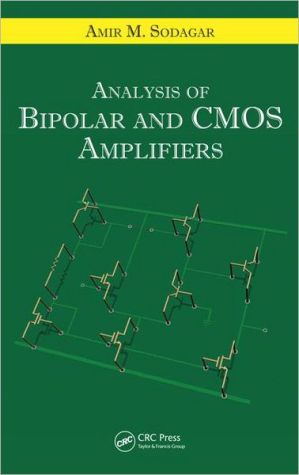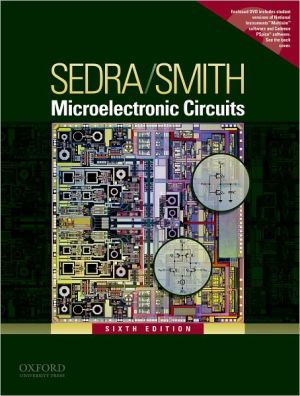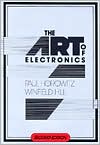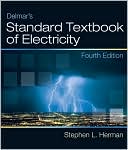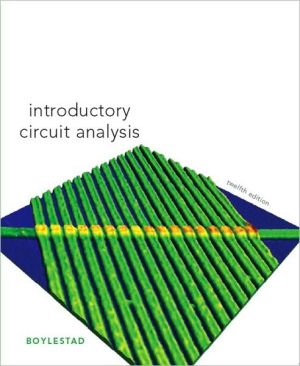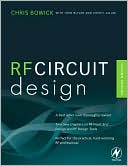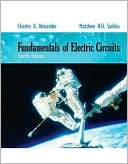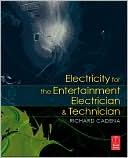Analysis of Bipolar and CMOS Amplifiers
The classical approach to analog circuit analysis is a daunting prospect to many students, requiring tedious enumeration of contributing factors and lengthy calculations. Most textbooks apply this cumbersome approach to small-signal amplifiers, which becomes even more difficult as the number of components increases. Analysis of Bipolar and CMOS Amplifiers offers students an alternative that enables quick and intuitive analysis and design: the analysis-by-inspection method.\ This practical and...
Search in google:
The classical approach to analog circuit analysis is a daunting prospect to many students, requiring tedious enumeration of contributing factors and lengthy calculations. Most textbooks apply this cumbersome approach to small-signal amplifiers, which becomes even more difficult as the number of components increases. Analysis of Bipolar and CMOS Amplifiers offers students an alternative that enables quick and intuitive analysis and design: the analysis-by-inspection method.This practical and student-friendly text demonstrates how to achieve approximate results that fall within an acceptable range of accuracy and are based on sound scientific principles. Working from the basics of amplifiers and transistors to biasing, single- and multistage amplifiers, current sources and mirrors, and analysis at midband, low, and high frequencies, the author demonstrates the interrelationship between behavior in both the time and frequency domains and balances the discussion between bipolar and CMOS circuits. Each chapter closes with a set of simulation examples in SPICE and MATLAB® that give students hands-on experience applying the concepts and methods using industry-standard tools.Building a practical working knowledge around a solid theoretical framework, Analysis of Bipolar and CMOS Amplifiers prepares your students to meet the challenges of quick and accurate approximations and software-based analysis awaiting them in the workplace.
BASICS OF AMPLIFIERS Introduction Basic Concepts A Signal and Its DC and AC Components A Convention to Name a Signal and Its Components Basic Types of Amplifiers A Fundamental Question Simulation Examples Problems TRANSISTORS Introduction Basic Concepts Metal-Oxide Semiconductor Field-Effect Transistor Bipolar Junction Transistor Simulation Examples Problems BIASING Introduction Biasing Bipolar Transistors Voltage-Divider Biasing Biasing PNP Transistors Biasing MOS Transistors Simulation Examples Problems SINGLE-STAGE AMPLIFIERS Introduction The Transistor as an Amplifier Two-Step Analysis of a Small-Signal Amplifier Coupling the Input/Output Signal to/from an Amplifier Basic Single-Stage Amplifier Configurations Analysis by Inspection Other Basic Types of Amplifiers Bipolar Amplifiers An Important Note Simulation Examples Problems MULTISTAGE AMPLIFIERS Introduction Biasing/Coupling AC Analysis Useful Compound Configurations Simulation Examples Problems CURRENT SOURCES/MIRRORS Introduction Simple Current Source/Mirror Cascode Current Source/Mirror Current Scaling Multi-Output Current Sources/Mirrors Bipolar Current Sources/Mirrors Current Sources for Biasing and as Active Loads Simulation Examples Problems ANALYSIS OF AMPLIFIERS AT LOW FREQUENCIES Introduction Basic Concepts in Frequency Domain Plotting an Amplifier's Response at Low Frequencies Low-Frequency Analysis by AC Analysis Methods Low-Frequency Analysis by Inspection Time Response More Than One External Capacitor Simulation Examples Problems ANALYSIS OF AMPLIFIERS AT HIGH FREQUENCIES Introduction Basic Concepts at High Frequencies Amplifiers at High Frequencies Plotting an Amplifier's Response at High Frequencies High-Frequency Analysis Time Response High Cut-Off Frequency Complete Response over the Entire Frequency Range Case Studies for High-Frequency Analysis of Multi-Stage Amplifiers Simulation Examples Problems REFERENCES INDEX
